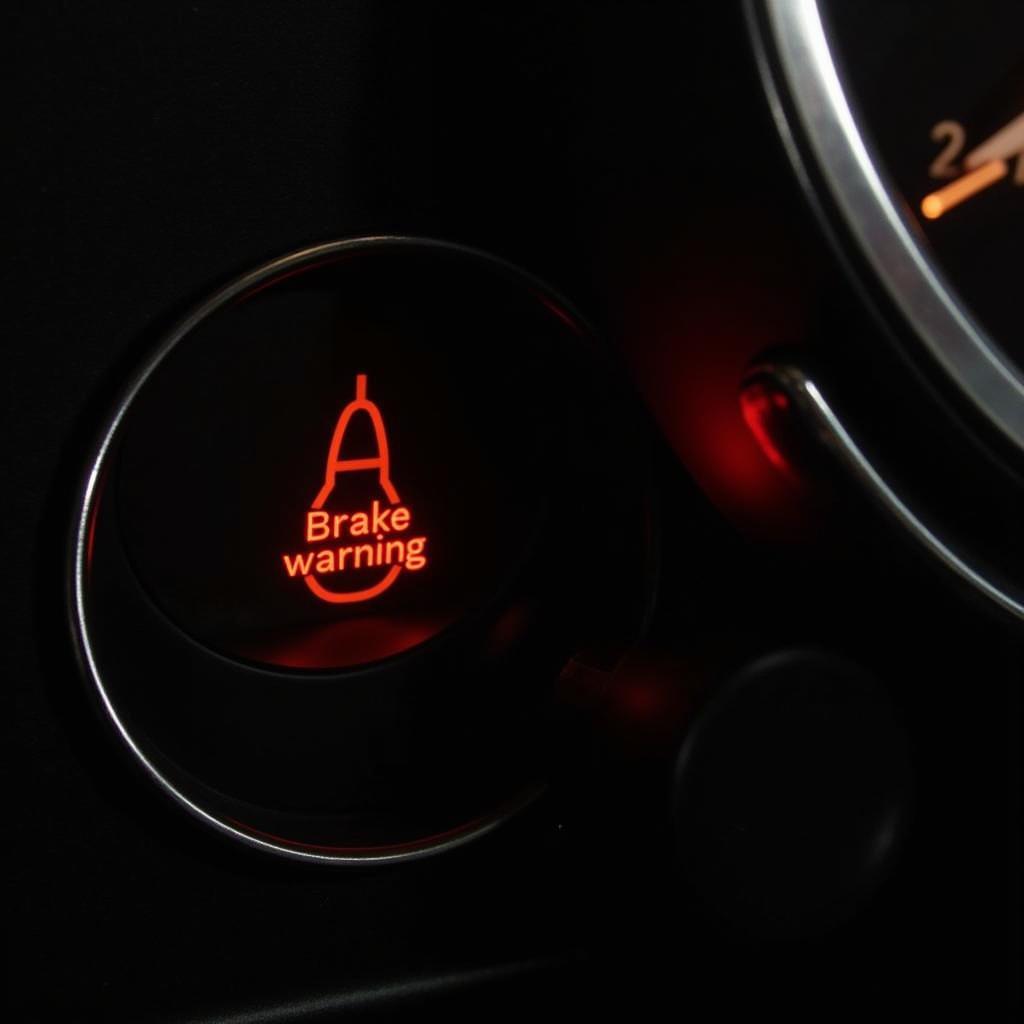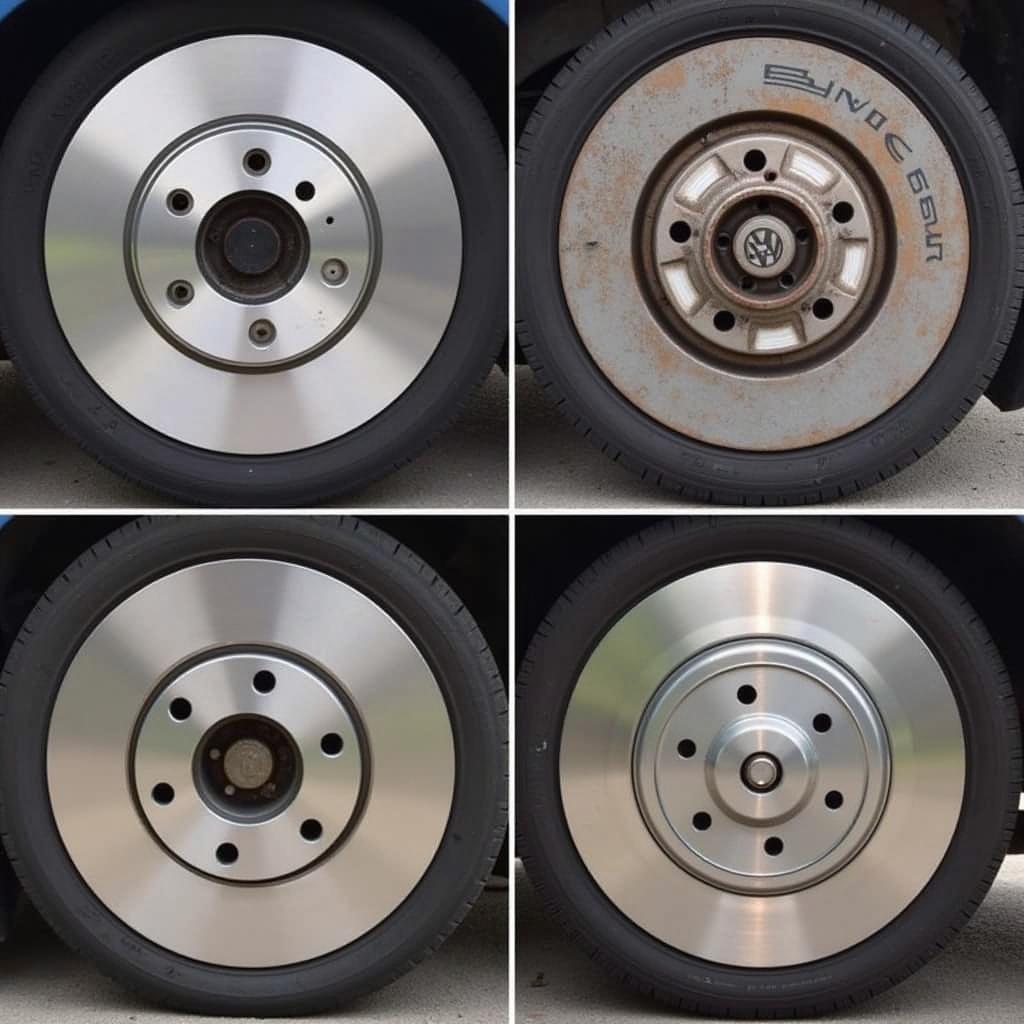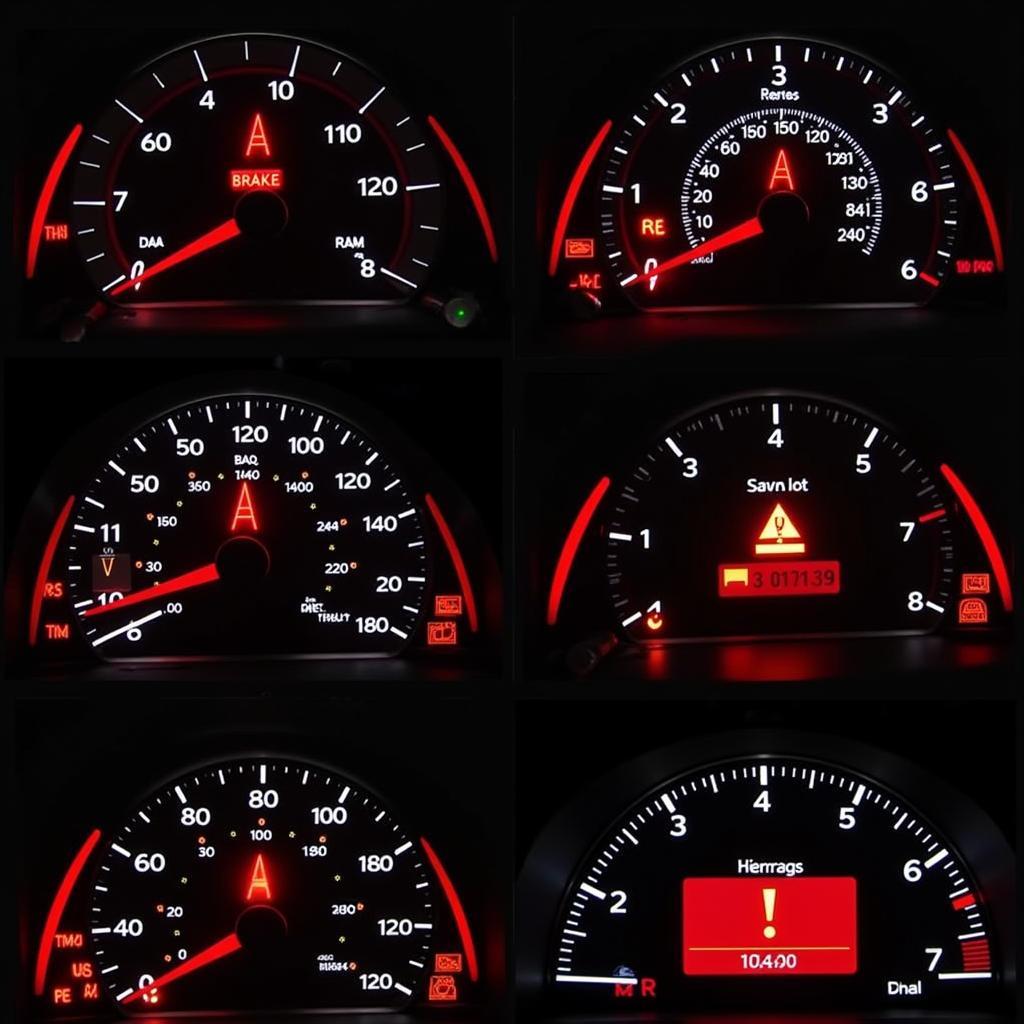The brake warning light on your 2008 Mini Cooper is a crucial safety feature, illuminating when the car’s computer detects a problem within the braking system. While it could signal a serious issue, sometimes it’s simply a matter of resetting the light after addressing a minor problem or even a system glitch. This comprehensive guide will walk you through the common causes of a lit brake warning light on a 2008 Mini Cooper, provide troubleshooting steps, and explain how to reset the light.
 2008 Mini Cooper Dashboard with Brake Warning Light Illuminated
2008 Mini Cooper Dashboard with Brake Warning Light Illuminated
Understanding Your Mini Cooper’s Brake Warning Light
The brake warning light on your Mini Cooper’s dashboard can illuminate for several reasons, ranging from simple to complex:
- Low Brake Fluid: This is the most common culprit. The brake system relies on hydraulic pressure to function, and low brake fluid directly impacts this pressure.
- Worn Brake Pads: Your Mini Cooper is designed to alert you when the brake pads wear thin. This is a normal part of wear and tear, and new brake pads will resolve the issue.
- Faulty Brake Light Switch: This switch activates your brake lights when you press the pedal. A malfunctioning switch can trigger the warning light.
- ABS Issue: The Anti-lock Braking System (ABS) helps prevent wheel lockup during braking. If the ABS sensor or module experiences issues, the warning light might illuminate.
- Other Brake System Malfunctions: More serious problems, such as a brake line leak or master cylinder failure, can also trigger the light.
Troubleshooting a Lit Brake Warning Light
Before attempting a reset, it’s crucial to understand why the light is on in the first place. Ignoring a genuine brake problem can compromise your safety.
Here’s a step-by-step guide to troubleshooting:
-
Check Brake Fluid Level: Park your Mini Cooper on a level surface and locate the brake fluid reservoir. It’s usually a translucent container with a “Min” and “Max” marking. If the fluid level is below the “Min” mark, add the correct brake fluid (DOT 3 or DOT 4 as specified in your owner’s manual) to bring it to the “Max” line.
-
Inspect Brake Pads: Visually inspect your brake pads through the spaces between the wheel spokes. If the pads are less than 1/4 inch thick, they likely need replacing. Consult your owner’s manual or a mechanic for confirmation.
-
Test Brake Lights: Have a friend press the brake pedal while you stand behind the vehicle to ensure both brake lights are working correctly. If one or both lights are out, the brake light switch might be at fault.
How to Reset the Brake Warning Light on a 2008 Mini Cooper
Important: Only attempt a reset if you’ve identified and addressed the underlying problem triggering the warning light.
There are two common ways to reset the brake warning light on a 2008 Mini Cooper:
Method 1: Driving Reset
- Start your Mini Cooper.
- Drive at a moderate speed (around 25-35 mph) for a short distance.
- If the issue was minor and resolved, the brake warning light should turn off automatically.
Method 2: Disconnecting the Battery
If the driving reset doesn’t work, you can try disconnecting the battery:
- Park your Mini Cooper on a level surface and engage the parking brake.
- Open the hood and locate the negative (-) terminal of the battery.
- Using a wrench, loosen the nut on the negative terminal and carefully disconnect the cable.
- Wait for 15-20 minutes to allow the car’s computer to reset.
- Reconnect the negative battery cable and tighten the nut securely.
- Start your Mini Cooper and check if the brake warning light has turned off.
When to Seek Professional Help
While these reset methods can be helpful for minor issues, it’s essential to seek professional help if:
- The brake warning light remains on after trying these reset methods.
- You’re unsure about the cause of the warning light.
- You’re uncomfortable performing the troubleshooting or reset procedures yourself.
A qualified mechanic can diagnose the problem accurately and perform any necessary repairs to ensure your Mini Cooper’s brake system functions correctly.
Remember, your safety is paramount. Never ignore a lit brake warning light, as it signifies a potential issue that requires attention. Addressing the problem promptly and resetting the light correctly ensures a safe and enjoyable driving experience in your 2008 Mini Cooper.
FAQs About Mini Cooper Brake Warning Lights
Q: Why is my brake warning light flashing?
A: A flashing brake warning light usually indicates a problem with the ABS system.
Q: Can I drive my Mini Cooper with the brake warning light on?
A: It’s strongly advised against driving with the brake warning light on. This light signals a potential problem with your braking system, which could lead to brake failure.
Q: How much does it cost to fix a brake warning light on a Mini Cooper?
A: The cost of repair varies significantly depending on the underlying cause. A simple brake fluid top-up might be inexpensive, while replacing major components like the master cylinder can be costly.
Q: How often should I check my Mini Cooper’s brake fluid?
A: It’s a good practice to check your brake fluid level at least once a month and top it up as needed.
Q: Do I need to use a specific type of brake fluid for my 2008 Mini Cooper?
A: Refer to your owner’s manual to determine the correct type of brake fluid, typically DOT 3 or DOT 4, for your specific model.
Remember, maintaining a proactive approach to vehicle maintenance and addressing warning lights promptly ensures your Mini Cooper remains in optimal condition for a safe and enjoyable driving experience. If you’re experiencing issues with your vehicle’s braking system, consider seeking guidance from a qualified mechanic or a specialized automotive service center. For insights into similar brake warning light issues on other vehicle models, you can explore resources like those addressing a 2003 Ram 3500 diesel emergency brake warning light, or a 2011 Dodge Grand Caravan brake warning light on intermittently. Additionally, understanding the various Buick brake warning light meanings can provide valuable context for interpreting similar warning signals across different car brands.


